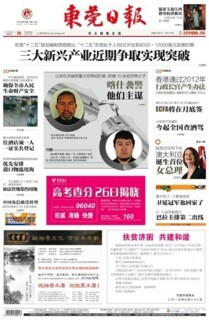Suspicious Timing
Nick Holdstock · The latest arrests in Xinjiang
Last Thursday the Chinese police claimed they had ‘cracked a terrorist cell headed by [Uighur] separatists’. At a press conference in Beijing, a Ministry of Public Security spokesman said that 10 people had been detained for their role in attacks on a police station in Kashgar in August 2008, and for ‘bombing supermarkets, hotel and government buildings’ in Kuqa. Two Uighurs were identified as the ringleaders: Abdurixit Ablet, 42, and Imin Semai'er, 33, both of whom were said to have confessed to planning a series of terrorist attacks. The press were also shown slides of bullets, axes, knives and pipe bombs allegedly made by the accused.
As with previous detentions, how and when the accused were arrested is unclear, as is the nature of the evidence against them (in any country, let alone one with as poor a record on torture as China, the words ‘interrogation’ and ‘confession’ must raise serious concerns). Instead the arrests have the air of a fait accompli, which is likely to be true of the verdicts as well: in China almost no one is ever found innocent when publicly accused of such a crime.
The timing of these arrests makes the judicial processes involved even more suspect. The announcements of the arrests of the drug-addicts accused of last year’s reported syringe attacks in Xinjiang and the Uighur ‘bomb makers’ rounded up last September were intended both to reassure the Han population in Xinjiang and to warn off anyone contemplating further attacks or protests. It’s surely no coincidence that the Chinese government has chosen to announce these latest arrests as the first anniversary of the Ürümqi riots approaches.

Comments
I also don’t follow the logic of your assertion that 'it is hard to imagine that none of these groups were involved in the July violence in Urumqi last year'. So far there has been no evidence of any radical Islamic group’s involvement in what was, after all, an initially peaceful protest, one that remained so for hours. Though the violence that followed was mainly directed at Han Chinese, there are other explanations for how the protest turned into a riot, such as the idea that the police and army provoked the protestors during the course of the afternoon. Whilst this is no way justifies or excuses the killings, it suggests a more complex picture of what happened than the ‘terrorism’ argument offered by the Chinese government.
It’s also unclear to me why something being ‘political commonsense’ means that it cannot also be suspicious.
As for the Urumqi riots, the initial protest was widely advertised on the internet and via local Uighur radio before 5 July. This would presumably have attracted the interest of those with extremist agendas, although the local government seemingly failed to grasp that possibility because they were completely unprepared for what then happened. As you suggest, there could be many reasons why the protests turned violent – including a nervous, over-the-top police response – but the scale of what then ensued and the severity of the violence point to some level of organization or incitement. The government has, of course, offered some arguments in this regard – identifying “ringleaders” and evidence of pre-planning and coordination – but that is normally dismissed because it is impossible to verify. They have also hobbled themselves by insisting it was the work of the harmless Rebiya Kadeer and the Uighur World Congress because it fits into a narrative familiar to the national audience.
What is clear is that by further alienating the Han and Uighur communities in Xinjiang the principal beneficiaries of the riots are those promoting radical Islamist or independence agendas that up to now have been largely out-of-kilter with mainstream Uighur sentiment. It clearly has not made things easier for the government, which has struggled since the riots to balance the imperatives of “ethnic harmony” with the retributive demands of Han nationalism.